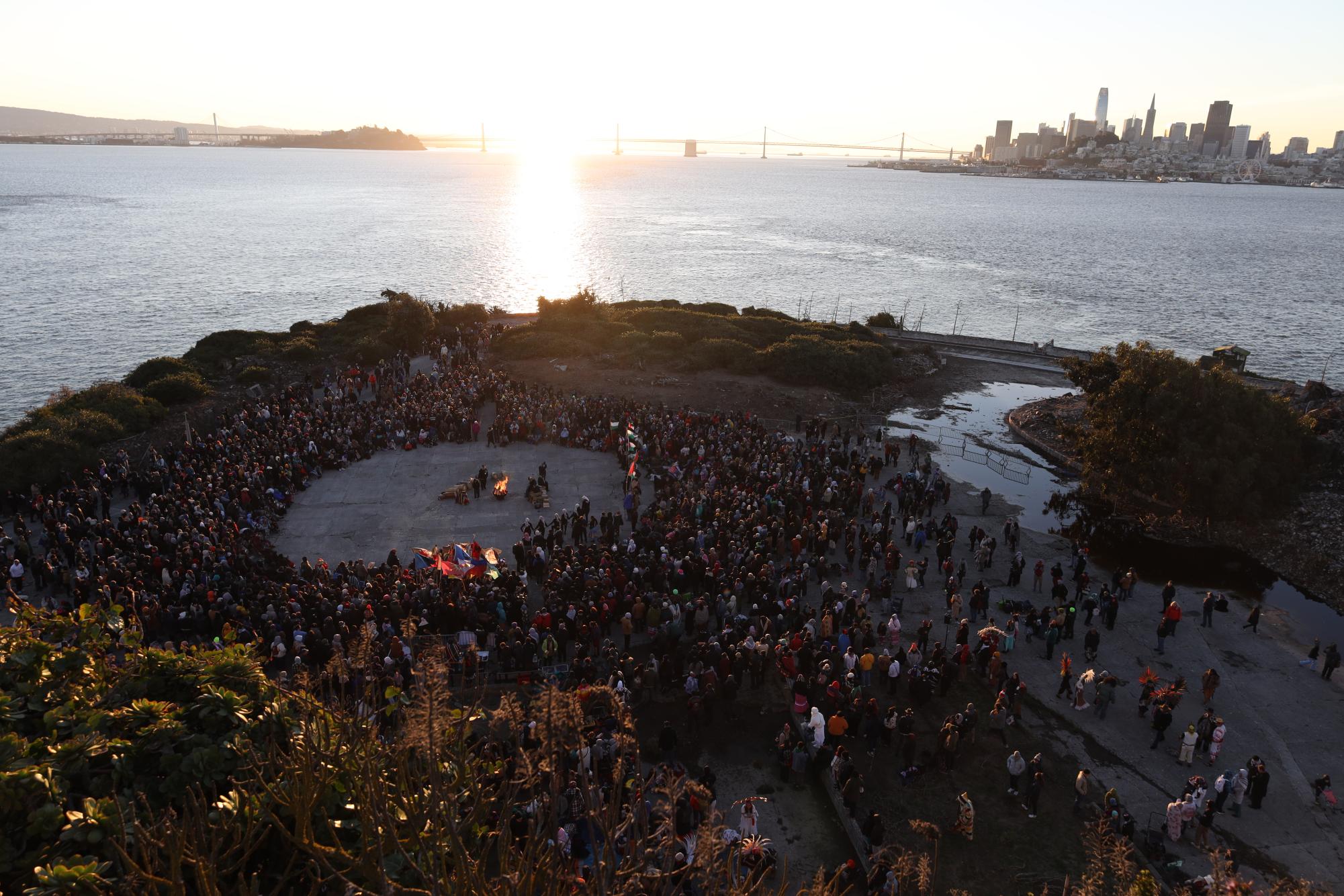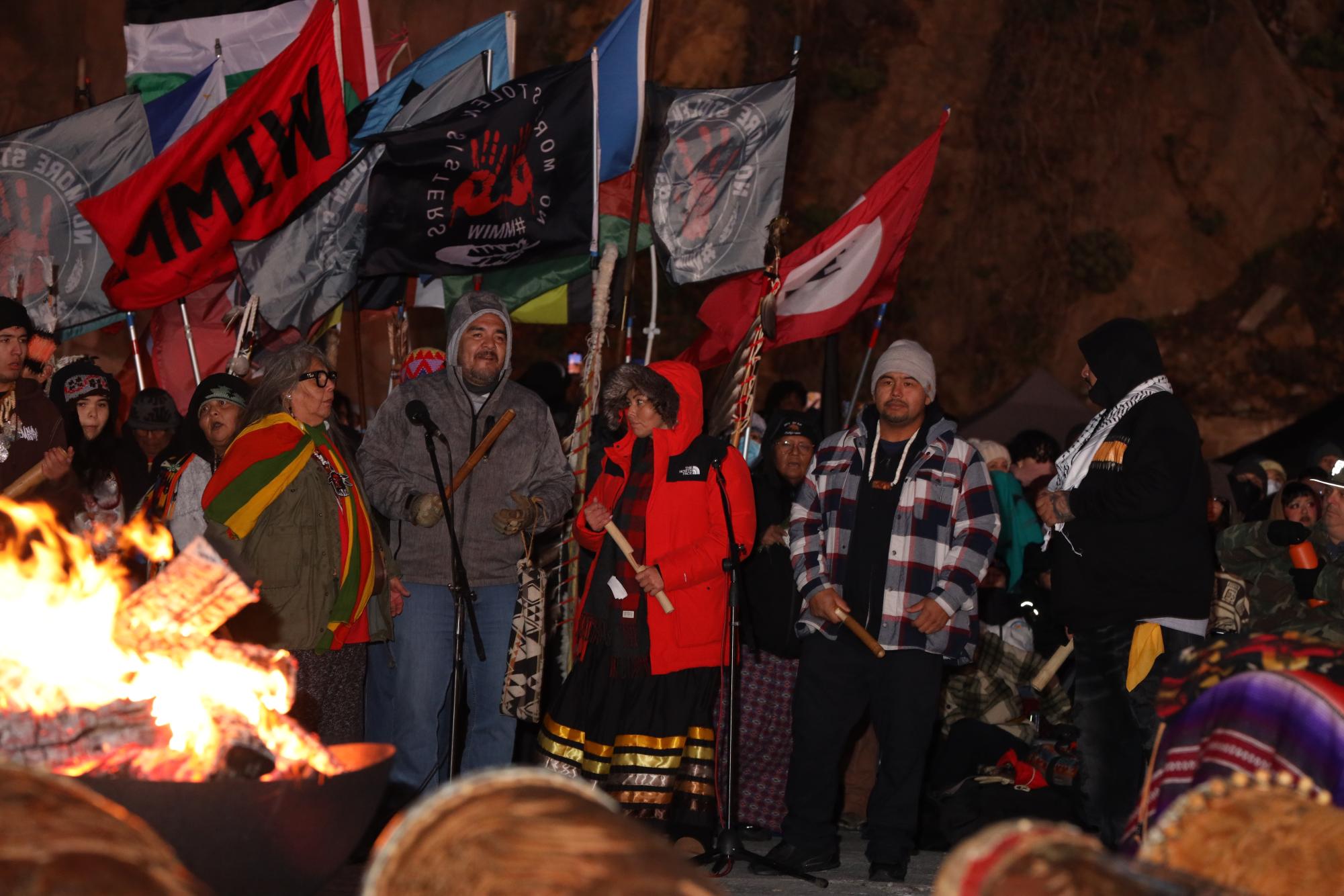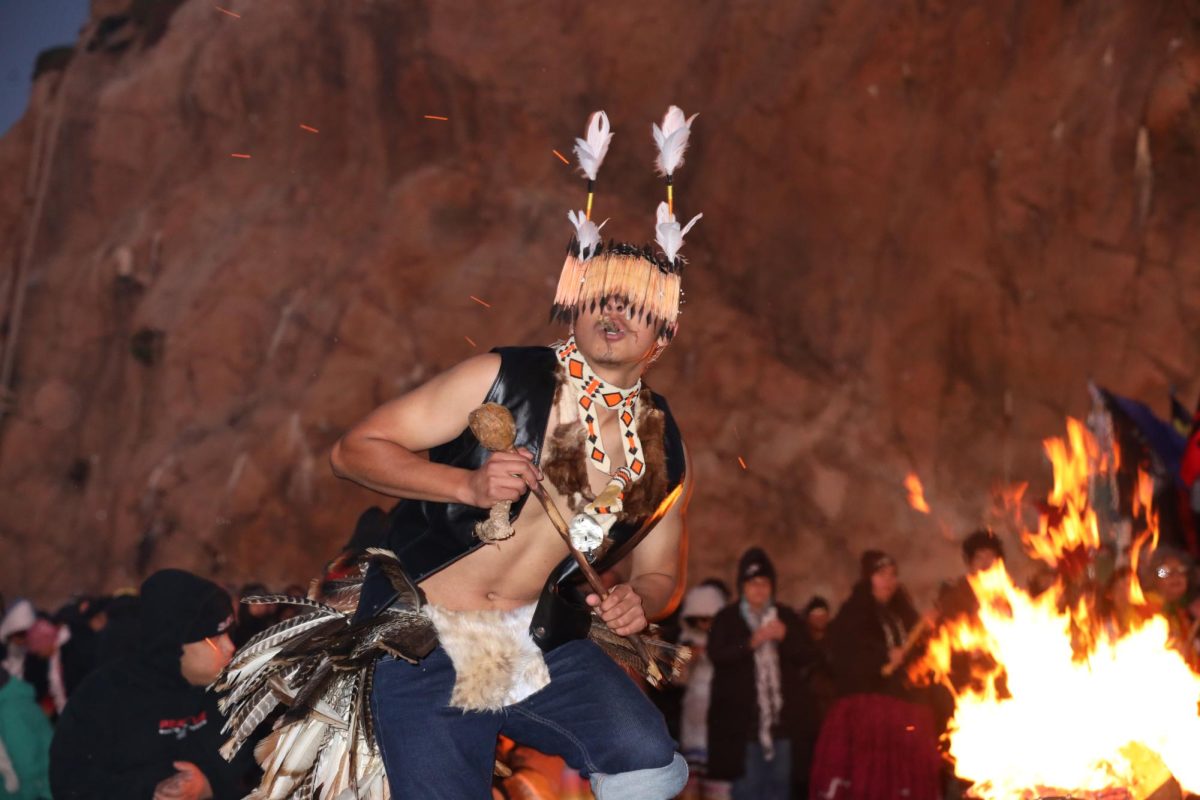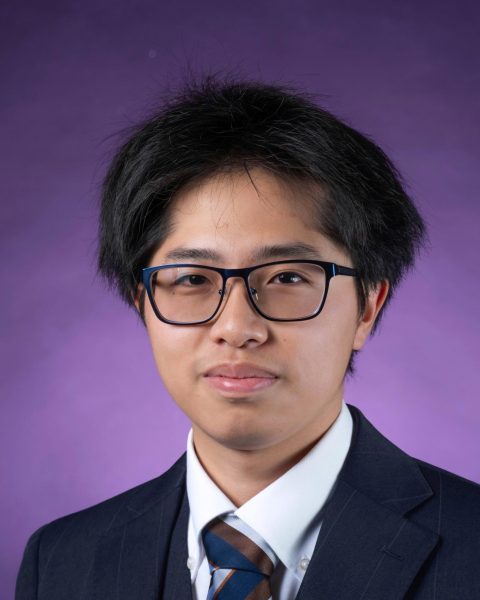About 5,000 people were on Alcatraz Island early this morning for the annual Indigenous Peoples Thanksgiving Sunrise Gathering. As the sun rose over the San Francisco Bay, the event honored resistance against oppression, not only in the Americas but around the world.
The ceremony included traditional prayers, songs, and dances, with participants gathering around a ceremonial fire. Many speakers emphasized themes of unity and resistance, connecting current Indigenous struggles to historical ones.
Organized by the International Indian Treaty Council, the gathering also commemorated the 1969 occupation of Alcatraz by the Indians of All Tribes, which included students from San Francisco State University led by Richard Oakes.
“The Alcatraz occupation was the spark that lit a flame seen around the world,” said IITC Co-founder William A. Means of the Oglala Lakota Nation in a press release. “We gather on Alcatraz Island every year to honor the resisters that stood up for our rights in 1969 and all the way back to 1492.”
The event also highlighted Thanksgiving’s history. Speakers said that the first Thanksgiving was declared by the governor of Massachusetts Bay Colony in 1637 to celebrate the massacre of 700 Pequot Indians.
“We are coming together in prayer and solidarity, sharing our resilient cultures and honoring the original occupiers who stood up for the sovereignty and self-determination of all Indigenous Peoples,” said Morning Star Gali in a press release. “We continue their commitment to defend the rights, cultures and lands of Indigenous Peoples in the spirit of unity, resistance, and healing.”

Activists who spoke at the gathering included those who discussed Gaza, salmon returning after the Klamath River dam removal and a petition for President Biden to grant clemency for Leonard Peltier.
Attendees took ferries from San Francisco’s Pier 33 starting at 4:15 a.m. and arrived back at Pier 33 by 9 a.m.
Brian Webster went to the ticket counter early Thursday morning after deciding to see the ceremony after not having attended one for over 30 years.
“I forgot — one — how cold it is, how big it is, how many people there were — I was shocked that the tickets were sold out,” Webster said. “I went on the website a week beforehand, the tickets were sold out so I was kinda praying that I could get a ticket.”
Some participants made long journeys and woke up very early to attend. Tina Rund drove from Oregon last night and didn’t sleep. She was one of many people who traveled to attend the ceremony.
“I think it’s awesome to see people from Peru all the way to Alaska — all nations — come in from all over,” Rund said.

Lynn Heinz, who drove from Arizona and stayed with friends, had attended smaller ceremonies closer to where she lives but it was her first time attending one on Alcatraz.
“There’s a lot more people,” Heinz said. “Arizona — it’s more specific that you mostly see a lot of Indigenous people celebrating there. Not a lot of other cultures do you see so much. So here, it’s just so much — I just feel like there’s more awareness with all the people that are here.”
Michelle Reddington Fazelli, who has attended since 1982, said the ceremony changes every year, reflecting changes in the world and current events.
“The world is constantly changing, but native medicine and the good red road in the four directions that are yellow, white, red and black does not change,” she said. “The intention does not change in space that we hold and the way that’s not changed.”
Another longtime attendee was Manny Lieras, a singer for the ceremony who has attended for 22 years and helps coordinate the musical performances.
“[It’s] a very diverse showing out of different indigenous folks from different tribes to come out and share culture and just celebrate our existence,” Lieras said. “Our existence truly is a resistance of systems that have impacted our communities through intentional cultural degradation… It’s just a big celebration for our lives and the people who came before us.”
The organization also organized a prior sunrise gathering on the island on Oct. 14 for Indigenous Peoples Day.
Editor’s note: Two photo captions have been updated for accuracy; members of the Round Valley Yuki tribe were misidentified.











Joseph Dudley • Nov 28, 2024 at 9:14 pm
That is a lie I was there this morning nowhere near 5000 people were there it says online that the tickets are limited only two fairies left the dock the fairy holds five to eight hundred people and no other fairies after the fairies were bored it no other fairies came to Alcatraz I feel that they are not allowing this ceremony to grow purposely for whatever reasons not sure if they can have fairies go back and forth all day to Alcatraz for people to view the prison they should allow the same thing or have more fairies on hand or do more trips it is not fair to the people that’s native Americans that they limit the tickets and they limit the ferry rides like I said this needs to be heard this needs to be shared. I’m speaking up for all nations and all native Americans of the United States and other countries we need to be heard someone needs to do more and if that is me and I will do so I will figure out who I need to contact to get this done thank you for listening AHO. All My relations
Neal Wong • Nov 30, 2024 at 11:34 am
1. I was there.
2. The ferryboats turned around to pick up more passengers after dropping them off.
3. The ferry ticket website shows eight departure times for ferries. https://www.cityexperiences.com/san-francisco/city-cruises/alcatraz/programs-and-events/annual-events/indigenous-peoples-sunrise-gathering/
4. I’m pretty sure there’s a limit to how many people were allowed because there’s limited space on Alcatraz Island. If you want a direct answer from the people in charge of the island, contact them through the methods listed on this website: https://www.nps.gov/alca/contacts.htm